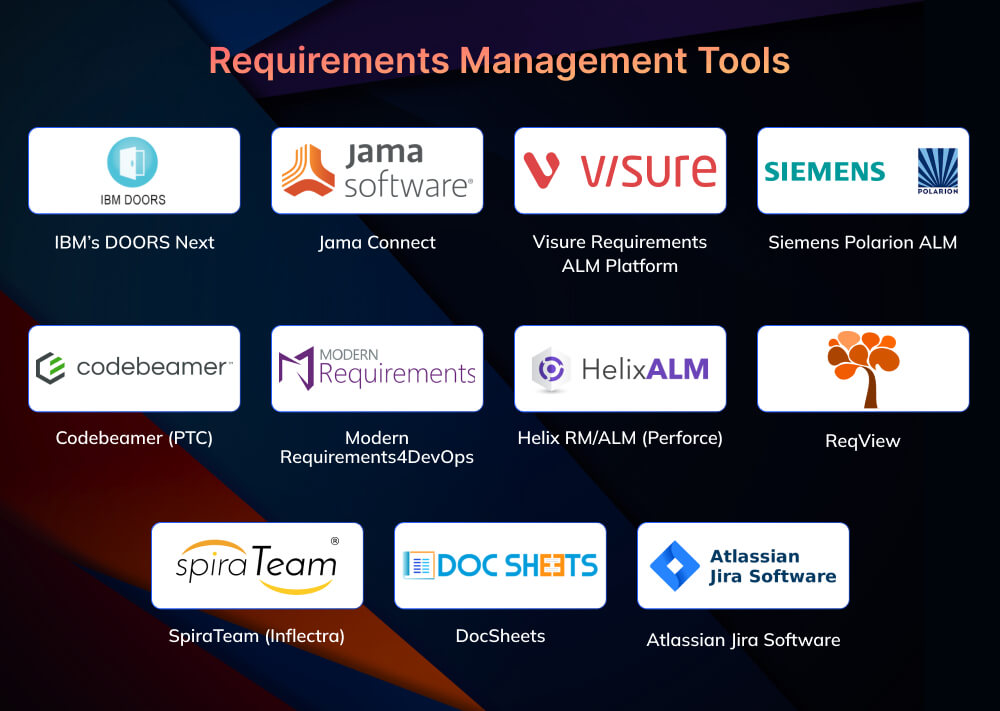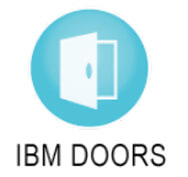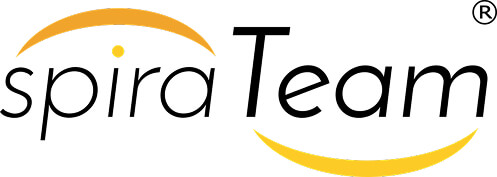
Every successful project begins with clear, well-documented requirements. When teams skip this step, even the most advanced tools and skilled professionals struggle to deliver results. Poorly managed requirements often lead to scope creep, misaligned expectations, and costly delays.
Requirements management tools exist to solve this problem. They give teams a structured way to capture, analyze, track, and update requirements throughout the project life cycle. By keeping everyone aligned from business stakeholders to development teams these tools reduce errors, improve collaboration, and keep projects on course.
This guide reviews 11 best requirements management tools for 2025. You’ll learn what sets each one apart, the trends shaping this market, and how to choose a tool that fits your organization’s size, industry, and compliance needs.
Table of Contents
- Rising Demand for Requirements Management Tools
- Importance of Requirements: Project Failure and Its Impact
- Top 11 Requirements Management Tools in 2025
- IBM’s DOORS Next
- Jama Connect
- Visure Requirements ALM Platform
- Siemens Polarion ALM
- Codebeamer (PTC)
- Modern Requirements4DevOps
- Helix RM/ALM (Perforce)
- ReqView
- SpiraTeam (Inflectra)
- DocSheets
- Atlassian Jira Software
- Regulatory and Compliance Requirements
- CMMI and Process Maturity
- Conclusion
Rising Demand for Requirements Management Tools
The market for requirements management tools is showing strong growth. According to a report by Business Research Insights, the global requirements management tools market was valued around USD 1.59 billion in 2025 and is projected to reach USD 1.75 billion by 2026.
Meanwhile, another report from Credence Research frames the broader “Requirements Management Software” market: it estimates growth from USD 13,765.35 million in 2024 to USD 35,570.8 million by 2032, reflecting a robust CAGR of 12.6%.
This momentum comes from three primary forces:
- Digital transformation, where success depends on precise requirements alignment.
- Agile and DevOps adoption, which demands continuous updates and traceability.
- Regulated industries such as healthcare, finance, and automotive, where compliance makes requirements management tools essential.
Together, these drivers are making requirements management platforms a strategic necessity for organizations that want to cut risk, control costs, and deliver projects with confidence.
Importance of Requirements: Project Failure and Its Impact
Project failure is common, and poor requirements practices are often at the heart of it. McKinsey reports estimate that about 70% of digital transformation initiatives fail to meet their goals. Some sources tie this failure rate directly to gaps in requirements, change management, or execution.
In broader software initiatives, project overruns and cancellations are widespread. Studies find:
- A significant share of projects are canceled before completion.
- Many projects overshoot budgets and timelines, often by large margins.
- Projects with weak requirements may require major rework and incur high costs in later stages.
When drilling into root causes, poor requirements are a recurring theme:
- In one PMI study, “inaccurate requirements gathering” was cited as a top cause of project failure (37% of surveyed cases).
- Some literature puts the rework cost of requirements defects at orders of magnitude higher when defects are discovered late vs early.
- For example, if a defect related to requirements is caught during system testing, its cost might be many times higher than if caught during the early design phase.
Some analyses even attribute hundreds of billions of wasted effort annually to poor requirements across industries, though such figures should be taken as indicative rather than exact. For instance, StickyMinds cites a $30 billion annual U.S. impact due to requirements error rework.
These patterns high failure rates, budget overruns, canceled projects, and expensive rework show clearly why requirements management isn’t optional. It’s a linchpin that directly affects cost, schedule, and quality.
Top 11 Requirements Management Tools in 2025
1. IBM’s DOORS Next
IBM DOORS Next is a modern, enterprise-grade requirements management tool designed for organizations handling complex, regulated, and safety-critical projects. Built on the IBM Jazz platform, it offers a web-based environment enabling teams to collaborate, manage, and trace requirements throughout the product lifecycle. It is used widely in industries like automotive, aerospace, and medical devices where compliance and traceability are paramount.
Key Features:
- End-to-end traceability linking requirements to design, testing, and risk artifacts
- Configurable workflows for approval, reviews, and compliance audits
- Version control with baselining to track changes
- Real-time collaboration with comments and shared dashboards
- Seamless integration with IBM’s Engineering Lifecycle Management suite and third-party tools like Jira
Pros:
- Strong traceability and impact analysis capabilities
- Scales well for large, complex projects
- Comprehensive compliance support for certified industries
Cons:
- Steep learning curve for beginners
- High implementation and licensing costs
- Complexity in customization and configuration
| Users say IBM DOORS Next shines in traceability, helping teams follow requirements from start to finish. However, the interface feels outdated and integrations lack flexibility compared to rivals. Large enterprises still favor it for its reliability in complex engineering projects. |
2. Jama Connect
Jama Connect is a cloud-native requirements management platform designed for modern product, systems, and software development teams. It excels in providing Live Traceability™, enabling real-time visibility of relationships and change impacts across requirements, tests, and risks. Widely adopted in regulated industries like automotive, aerospace, and medical devices, Jama Connect supports team collaboration, compliance, and accelerated product delivery with a user-friendly interface.
Key Features:
- Live Traceability™ for end-to-end visibility
- Structured review and approval workflows with electronic signatures
- AI-powered Jama Connect Advisor to enhance requirements quality
- Integrated risk and hazard analysis tools
- APIs and connectors for Jira, testing tools, and DevOps systems
Pros:
- Intuitive, modern interface promoting rapid adoption
- Strong audit and compliance reporting capabilities
- Scalable cloud platform with managed upgrades and security certifications (SOC 2)
Cons:
- Can have a steep learning curve for formal RM beginners
- Advanced compliance modules increase total cost
- Performance relies on infrastructure and correct configuration
| Jama Connect draws praise for modern UI, strong review workflows, and Live Traceability across tools; support and onboarding get good notes. Friction points include floating-license downgrades, complex multi-product views, formatting/import quirks, and test management limits for large variants. |
3. Visure Requirements ALM Platform
Visure Requirements ALM Platform is a comprehensive solution for managing requirements, risks, and tests, tailored for organizations in regulated industries. Known for its flexibility and robust compliance support, it streamlines collaboration, traceability, and reporting across the project lifecycle. With recent AI integration, Visure helps teams spot and mitigate risks more efficiently by analyzing historical data for potential issues.
Key Features:
- End-to-end traceability across requirements, risks, and tests
- Configurable templates for industry standards (e.g. ISO 26262, DO-178C, DO-254)
- AI-powered risk analysis and requirements generation
- Customizable workflows, impact analysis, and baseline management
- MS Office integration, document export, and reusability of artifacts
Pros:
- Highly configurable for different compliance needs
- Strong integration and reporting capabilities
- Streamlines audits and certification preparation
Cons:
- Initial setup and customization can be complex
- User interface may require training for optimal use
- Performance can lag with very large data sets
| Visure earns praise for being reliable, respectful of users, and strong at boosting productivity in safety-critical industries. People like its traceability and reporting, though setup and integrations can take effort. Overall, most customers see solid value for the price. |
4. Siemens Polarion ALM
Polarion ALM is an enterprise-grade requirements management and application lifecycle platform, renowned for harmonizing engineering processes across industries like automotive, embedded systems, and medical devices. It enables teams to author, link, trace, and manage requirements, fostering transparent collaboration from ideation to release. Recent AI-driven features facilitate automated requirement extraction and mapping, improving accuracy and reducing manual effort.
Key Features:
- End-to-end traceability across requirements, code, and test cases
- AI-powered requirement extraction and mapping from documents
- Full compliance tracking, audit management, and real-time dashboards
- Branching/reuse, baseline management, and customizable templates
- Integration with Jira, MATLAB, IBM DOORS, and Teamcenter
Pros:
- Robust compliance support for regulated industries
- Centralized collaboration for distributed teams
- Powerful workflow automation and audit trail features
Cons:
- Initial learning curve for new users
- Requires deliberate upfront configuration for best results
- Some reviews cite documentation and in-app training could improve
| Polarion ALM earns high marks for flexibility, traceability, and customization, especially in regulated industries. Many teams value its all-in-one approach, though some mention complexity, training needs, and support issues. Overall, it’s seen as powerful but not always beginner-friendly. |
5. Codebeamer (PTC)
Codebeamer by PTC is a robust Application Lifecycle Management (ALM) platform that places a strong focus on requirements management for highly regulated and agile product development teams. The tool is widely used in automotive, medical devices, and embedded systems, offering customizable templates and workflow automation to ensure compliance with standards such as ISO 26262, FDA, and Automotive SPICE.
Key Features:
- Complete requirements, risk, and test management with end-to-end traceability
- Pre-configured compliance templates for regulated industries
- Powerful workflow automation and customizable approval processes
- Integration support for Jira, Git, Jenkins, and other CI/CD tools
- Scalable for enterprise-wide use, enabling global team collaboration
Pros:
- Excellent compliance support for complex projects
- Flexible integrations and automation options
- Seamless traceability and coverage reporting
Cons:
- Configuration and initial setup may be time-consuming
- Detailed customization can overwhelm new users
- Premium pricing for advanced modules
| Codebeamer gets credit for deep customization, strong traceability, and flexible, web-based workflows, especially in larger orgs. Common knocks: dated UI, slower product improvements, and added costs as you scale. Best fit when you’ve got capacity to administer it well. |
6. Modern Requirements4DevOps
Modern Requirements4DevOps is a requirements management solution built directly into Microsoft Azure DevOps, making it ideal for teams who rely on the Windows ecosystem. It transforms Azure DevOps into a comprehensive requirements hub, allowing dynamic documentation, traceability, and reusable requirement libraries. Its real-time integration supports agile, CI/CD, and DevOps processes without needing disconnected tools.
Key Features:
- Embedded within Azure DevOps for seamless native integration
- Living documentation that automatically updates with work items
- Requirement libraries, reuse, and impact analysis workflows
- Full traceability and audit trails for compliance tracking
- Approval workflows supporting electronic signatures and structured reviews
Pros:
- No data syncing; works natively inside Azure DevOps
- Flexible for both agile and waterfall teams
- Reduces tool fragmentation, streamlining DevOps governance
Cons:
- Best suited for organizations committed to Azure DevOps
- Advanced customization requires deeper Azure DevOps knowledge
- Not all features available outside Microsoft ecosystem
| Modern Requirements4DevOps is appreciated for its seamless Azure DevOps integration and AI-powered features that boost productivity. Still, users point out its Azure-only limitation, higher cost for smaller firms, and occasional browser or formatting glitches. Strong for DevOps-heavy teams needing traceability. |
7. Helix RM/ALM (Perforce)
Helix RM/ALM, developed by Perforce, is a comprehensive lifecycle management tool combining requirements, test, and issue tracking into one system. It is designed for teams focused on continuous delivery and DevOps, providing end-to-end traceability from requirements through testing to defect resolution. Its customizable workflows enable organizations to enforce process consistency and comply with industry standards.
Key Features:
- Integrated requirements, test case, and defect management
- Customizable workflows with approval gates and automation
- Role-based dashboards and reporting for project oversight and audits
- Traceability reporting linking requirements to test outcomes and defects
- Integration with CI/CD pipelines and DevOps toolchains
Pros:
- All-in-one ALM solution reduces tool sprawl
- Strong automation capabilities support faster delivery
- Scalable for teams from small to enterprise size
Cons:
- Configuration complexity for organizations new to ALM
- User interface can be less intuitive than specialized tools
- Higher cost associated with full feature set
| Perforce ALM (Helix ALM) is recognized for strong traceability, compliance support, and modular flexibility across requirements, testing, and issues. Users like its integrations and audit-ready records, but point to high licensing costs, complex customization, and dated collaboration features. A solid fit for regulated industries with compliance needs. |
8. ReqView
ReqView is a lightweight and user-friendly requirements management tool designed for small to mid-sized engineering teams. It enables users to manage hierarchical requirements, maintain full traceability, and track changes using familiar version control systems like Git and Subversion. ReqView supports both cloud-based and on-premise deployments, offering flexibility to suit diverse workflows.
Key Features:
- Hierarchical requirements management with customizable attributes
- Traceability matrix and visual impact analysis
- Offline editing with Git/SVN integration for version control
- Export options including Word, PDF, HTML, and Excel reports
- Baseline snapshots to track requirement sets over time
Pros:
- Simple to deploy and use with minimal training
- Strong integration with software engineering version control tools
- Affordable pricing for small to medium enterprises
Cons:
- Limited advanced workflow automation features seen in enterprise tools
- Less suited for large-scale or highly regulated projects
- May require plugins to integrate with other ALM tools
| ReqView is valued for being lightweight, affordable, and standards-friendly, teams like its V-model support, offline use, and Git/SVN integration. Users find it intuitive once set up, with strong traceability and export options, though there’s a bit of a learning curve at the start and limited collaboration visibility. |
9. SpiraTeam (Inflectra)
SpiraTeam by Inflectra is an integrated requirements management platform that combines RM with test management, issue tracking, and release planning. It’s designed for software and engineering teams requiring end-to-end visibility and traceability throughout the product lifecycle. SpiraTeam supports regulated industries with compliance features for ISO 26262 and other standards.
Key Features:
- Centralized management of requirements, tests, defects, and tasks
- Real-time dashboards with customizable metrics and reports
- Bi-directional traceability for requirements to test cases and defects
- Compliance tracking and audit-ready documentation
- Integration with development tools like Jira, Git, and Jenkins
Pros:
- All-in-one suite reduces tool fragmentation
- Strong compliance support suited for safety-critical projects
- Flexible integration and automation capabilities
Cons:
- Migration between tools can be complex
- Limited scaling for very large enterprises due to single database
- Some setup complexity for advanced workflows
| SpiraTeam gets strong public marks for true end-to-end ALM: requirements, testing, code, and reporting in one place. Teams like its flexibility and integrations, though the UI feels dated and initial workflow setup takes some learning. Overall sentiment and value are high. |
10. DocSheets
DocSheets is an intuitive requirements management platform designed to be as easy to use as word processors and spreadsheets, yet powerful enough for enterprise needs. It enables teams to create, manage, and trace requirements, test cases, and project artifacts seamlessly across various methodologies including Agile, Scrum, and Waterfall.
Key Features:
- Real-time collaboration with multiple users and version control
- Automatic change management with baseline comparison and revision tracking
- Traceability matrix linking requirements, tests, and releases
- Document generation with customizable formats and automated Table of Contents
- Comprehensive reporting and dashboards for gap analysis and compliance
Pros:
- User-friendly with zero coding required for customization
- Scales efficiently from small teams to thousands of users
- Supports integration of multiple development methodologies
Cons:
- Smaller market presence compared to legacy enterprise tools
- Limited advanced automation compared to specialized ALM platforms
- May require onboarding for teams used to traditional RM tools
| DocSheets gets strong marks for reliability, responsive support, and easy setup, users highlight its stability and tailored improvements from the vendor. The only drawback mentioned is minor adaptation when using it outside its original scope, which the team actively addresses. |
11. Atlassian Jira Software
Jira Software by Atlassian is one of the most popular tools for managing software development projects, with strong capabilities supporting requirements management within agile and DevOps teams. While primarily a project and issue tracker, Jira’s customizable workflows and issue types allow teams to capture, organize, and track requirements effectively.
Key Features:
- Flexible agile boards and sprint planning tools
- Custom issue types designed for requirements and user stories
- Integration with Atlassian suite: Confluence for documentation, Bitbucket for code repositories
- Extensive third-party app marketplace for enhanced RM features
- Rich reporting including burndown charts and velocity tracking
Pros:
- Huge, active user base and community support
- Highly customizable and integrates with a wide tool ecosystem
- Intuitive interface suited for agile teams
Cons:
- Not designed as a dedicated RM tool; lacks deep traceability and compliance features
- Can become complex and cumbersome for large-scale, formal RM processes
- Limited out-of-the-box audit or regulatory compliance functionality
Key Factors to Consider: Industry Standards & Maturity Models
When choosing a requirements management tool, you must consider how well it supports industry standards (for compliance) and organizational maturity models (for process discipline).
Regulatory and Compliance Requirements
- ISO 9001:2015, under clause 8.5.2, mandates identification and traceability of outputs when traceability is required.
- Although ISO 9001’s traceability is more commonly applied to products and production, the principle of traceability (linking deliverables back to requirements) aligns with requirements management tools in regulated environments.
- ISO 26262 (functional safety for automotive systems) enforces strict traceability of requirements through the lifecycle in safety-critical systems. Many automotive software projects must maintain bidirectional traceability across requirement, design, implementation, and testing. (While I didn’t locate a public ISO 26262 clause text in my quick check, it is well-documented in industry literature that traceability is a core requirement in automotive functional safety standards.)
Thus, in industries such as automotive, aerospace, medical devices, and finance, traceability, audit trails, and versioning support are frequently non-negotiable.
CMMI and Process Maturity
- In CMMI (Capability Maturity Model Integration), maturity levels reflect an organization’s process discipline and measurement control.
- For Maturity Level 2 (Managed), one of its key process areas is Requirements Management (REQM). At this level, organizations manage requirements, maintain baselines, and trace changes.
- The Requirements Development (RD) process area (in CMMI-DEV) describes how requirements should be elicited, analyzed, validated, and refined; doing this well is part of moving beyond Level 2 to higher maturity.
- At Level 3 (Defined), organizations standardize and institutionalize processes across projects, reducing variability and increasing reliability.
- Level 4 (Quantitatively Managed) introduces data-driven decision-making: processes are measured, performance baselines are used, and statistical techniques drive improvements.
Organizations seeking higher maturity (Level 3 or 4) or those operating under contractual or regulatory audits often require robust requirements management tools that support traceability, versioning, impact analysis, and metrics.
As of 2025, the landscape of requirements management tools has evolved to offer robust solutions that cater to diverse project needs.
| Jira continues to lead the pack with robust Agile features, flexible workflows, and deep integrations. Users praise its adaptability and traceability across complex projects but note that it can feel overwhelming for non-technical staff. Best suited for teams ready to invest in setup and training. |
Conclusion: Future Trends and Market Outlook
The future of requirements management tools is being shaped by shifting work models, increasing project complexity, and the demand for faster delivery. Organizations are under pressure to maintain clarity and traceability across distributed teams, while also ensuring compliance with strict industry standards.
Next-generation tools will move beyond simple documentation. They are evolving into intelligent platforms that provide real-time insights, automate change impact analysis, and integrate seamlessly with cloud-based ecosystems and DevOps pipelines. Agile-friendly features, such as backlog alignment and iterative updates, will continue to play a central role in how teams adapt requirements throughout the project lifecycle.


























